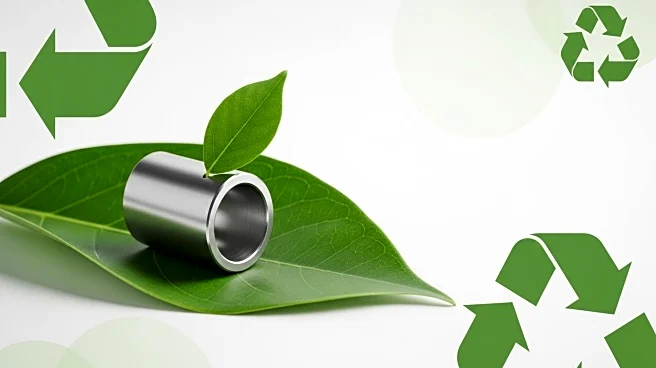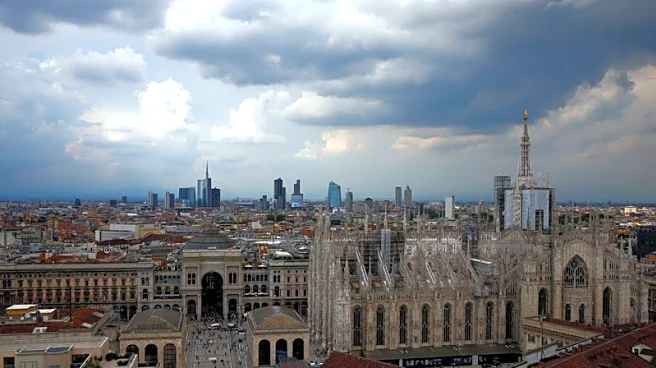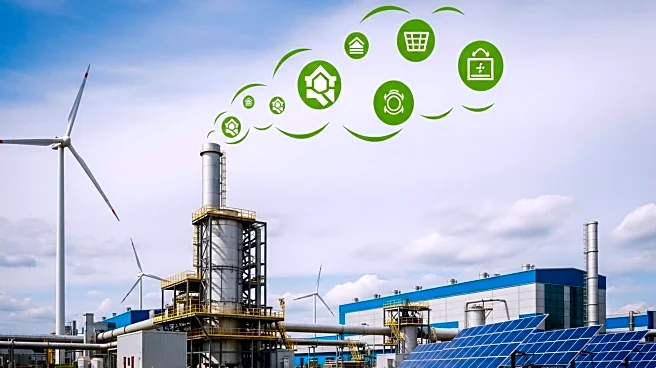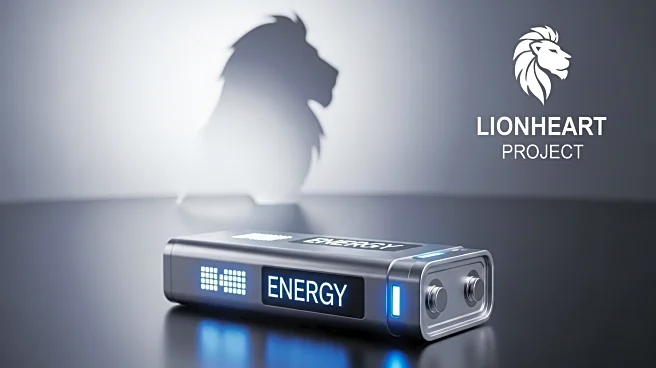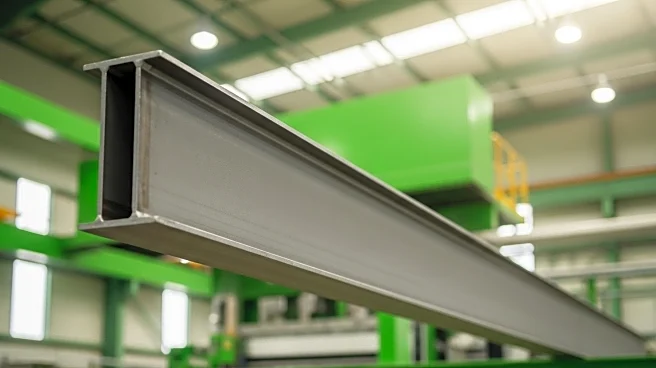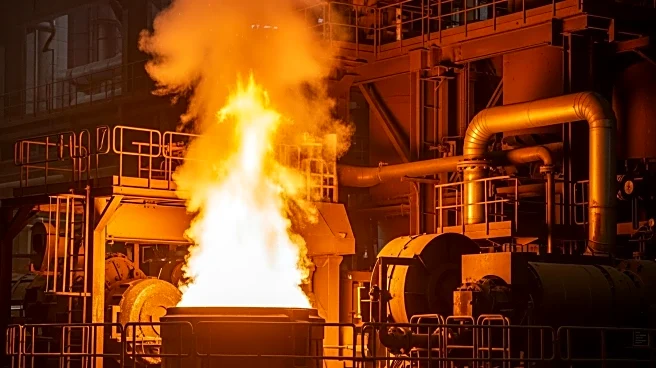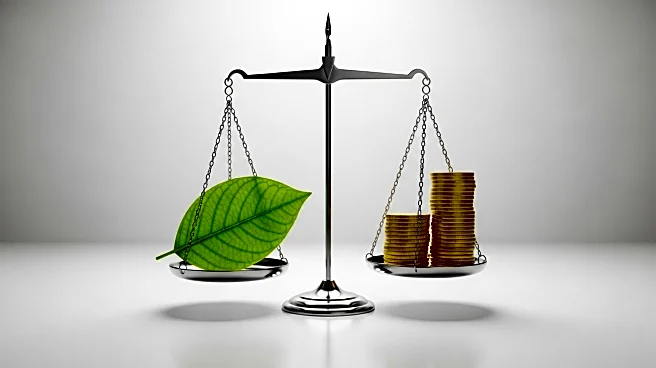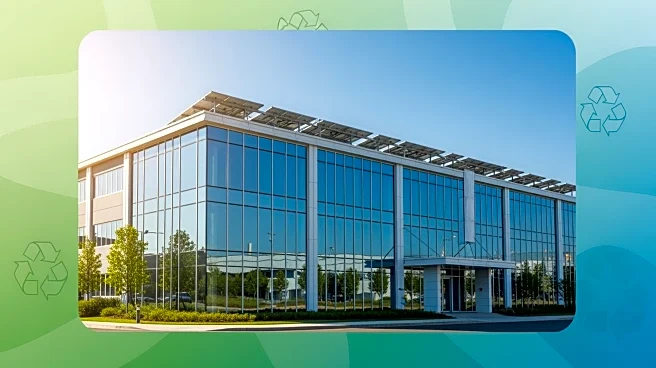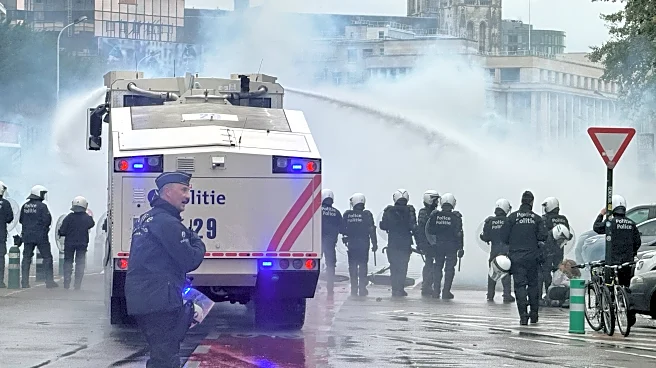What is the story about?
What's Happening?
The European Union has revised its Emissions Trading System (EU ETS) to subsidize the production of low-emission steel products, particularly through hydrogen-based direct reduced iron and electric arc furnace (H2-DRI-EAF) methods. Starting in 2026, the updated benchmarks will allow free allocation of EU allowances for the production of pellets, direct reduced iron, and green hydrogen, reducing the net EU ETS cost for producers who emit less than the benchmark value. This revision aims to shift the competitive landscape in favor of H2-DRI-EAF steel production, which is less emission-intensive compared to traditional blast furnace-basic oxygen furnace (BF-BOF) methods. The changes are expected to encourage decarbonization efforts within the EU steel industry, aligning with broader climate goals.
Why It's Important?
The revision of the EU ETS is significant as it supports the transition to greener steel production methods, which are crucial for reducing carbon emissions in the industry. By incentivizing low-emission technologies, the EU aims to maintain its competitive edge in the global steel market while adhering to environmental standards. This move could lead to increased investments in H2-DRI-EAF technologies, fostering innovation and potentially lowering production costs over time. The shift also highlights the EU's commitment to achieving net-zero emissions, setting a precedent for other regions to follow suit in their industrial decarbonization efforts.
What's Next?
As the EU implements these changes, steel producers are expected to adapt by investing in H2-DRI-EAF technologies to benefit from the revised EU ETS. The competitive landscape will likely evolve, with traditional BF-BOF methods facing increased pressure to reduce emissions or risk losing market share. Additionally, the EU's Carbon Border Adjustment Mechanism (CBAM) will play a role in ensuring that imported steel meets similar emission standards, potentially affecting global trade dynamics. Stakeholders, including steel manufacturers and environmental groups, will closely monitor the impact of these revisions on production costs and emission levels.
Beyond the Headlines
The EU's approach to revising the ETS and implementing the CBAM reflects a broader trend towards integrating environmental considerations into economic policies. This could lead to a decarbonization race among global steel producers, as they strive to meet the EU's stringent emission standards. The focus on green steel production also raises ethical questions about the balance between economic competitiveness and environmental responsibility, challenging industries to innovate sustainably.
AI Generated Content
Do you find this article useful?
